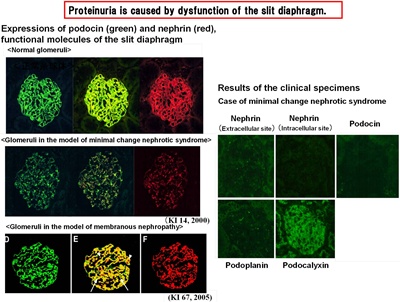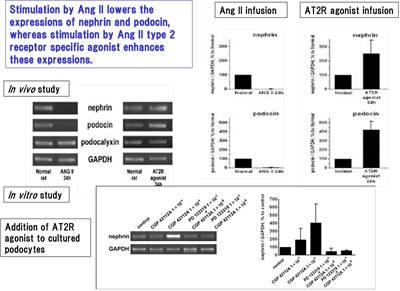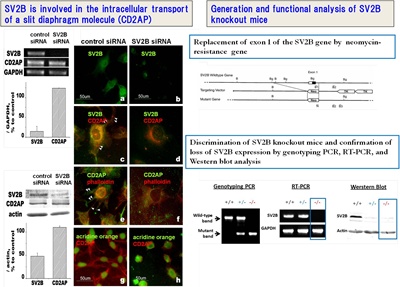Cell Biology
HOME > Activities > Kidney Research Center > Cell Biology
1.Research Summary
The Department of Cell Biology is engaged in ongoing research aimed at understanding the mechanisms underlying the pathogenesis and progression of renal glomerular diseases, in order to develop new therapies. In particular, our efforts are focused on elucidating the pathogenic mechanisms of proteinuria, the development of new treatments for nephrotic syndrome, and elucidation of the pathogenic mechanisms underlying glomerular sclerosis in order to decrease the annually increasing number of the patients with chronic renal failure.
2.Research subjects
- Molecular structure of the slit diaphragm between the foot processes of podocytes (glomerular epithelial cells)
- Mechanisms of the formation and maintenance of the slit diaphragm structure
- Alteration of the molecular structure of the slit diaphragm and its role in the development of proteinuria
- Regulatory mechanisms of expressions of slit diaphragm molecules by the renin-angiotensin system
- Transport mechanisms of slit diaphragm molecules by synaptic vesicles
- Development of novel diagnostic strategies for the differentiation of disease conditions
- Development of novel therapeutic strategies for proteinuria
- Pathogenesis of glomerular sclerosis
3.Research Results
|
[Area] Cell Biology |
|
|
[Research subject] Alteration of the molecular structure of the slit diaphragm and its role in the development of proteinuria |
|
|
[Description] |
[Photographs]
|
|
[Area] Cell Biology |
|
|
[Research subject] Regulatory mechanisms of expressions of slit diaphragm molecules by the renin-angiotensin system |
|
|
[Description] |
[Photographs]
|
|
[Area] Cell Biology |
|
|
[Research subject] Transport mechanisms of slit diaphragm molecules by synaptic vesicles |
|
|
[Description] |
[Photographs]
|
Please see the Cell Biology website for a detailed description of our research.



